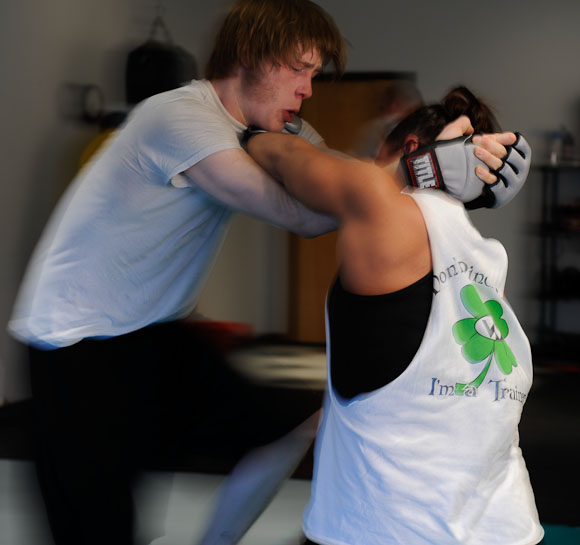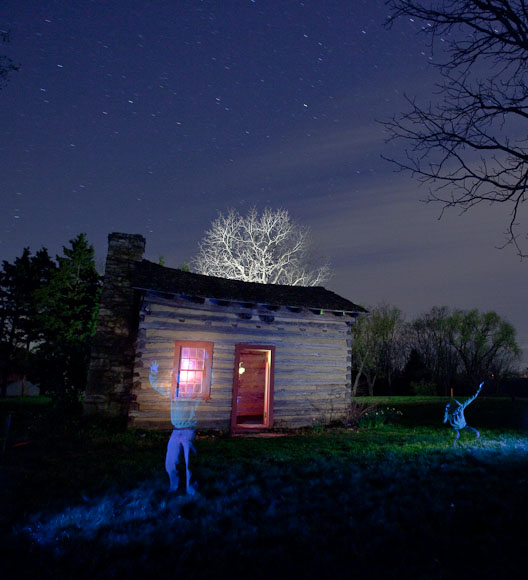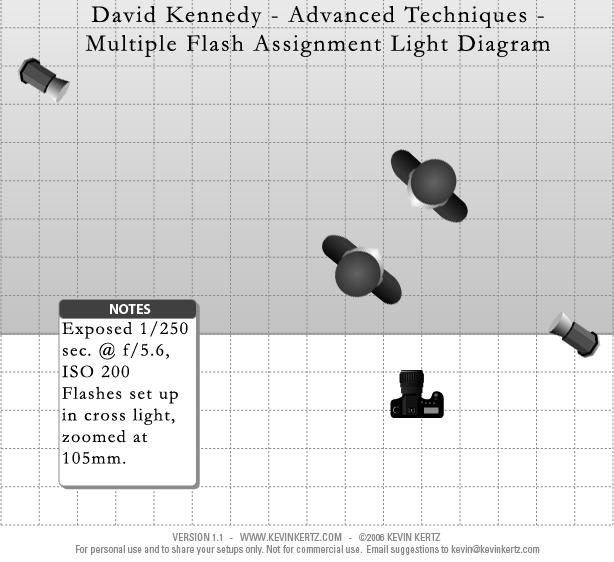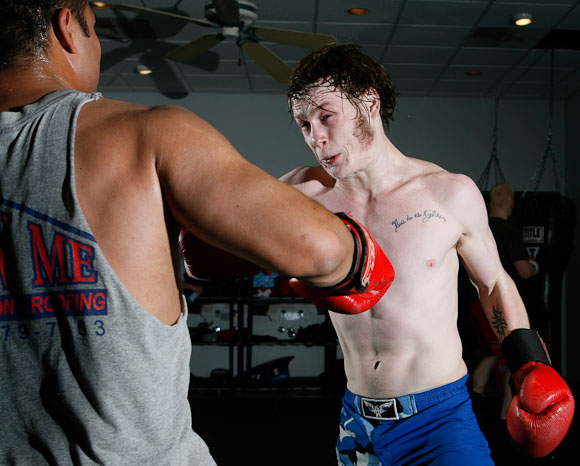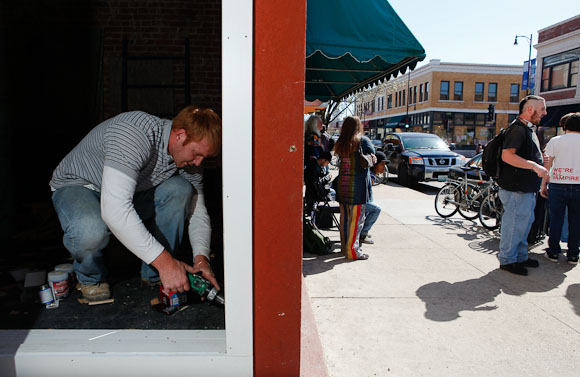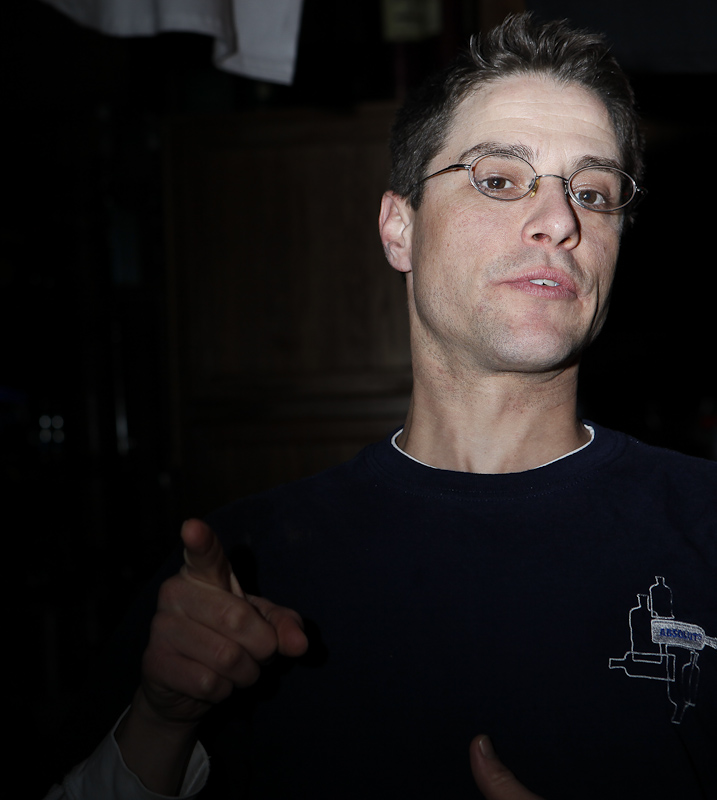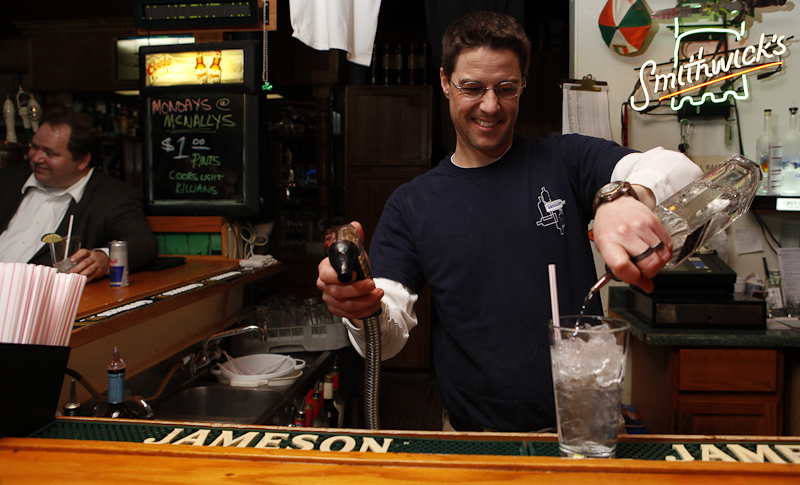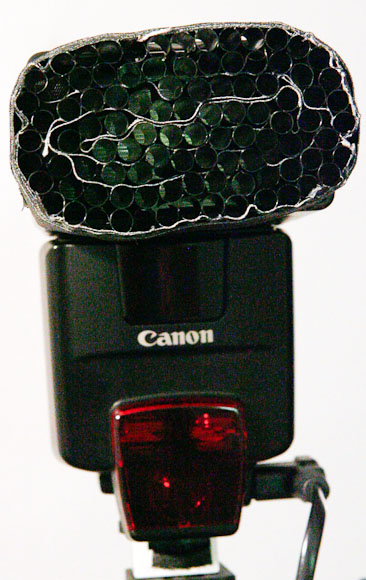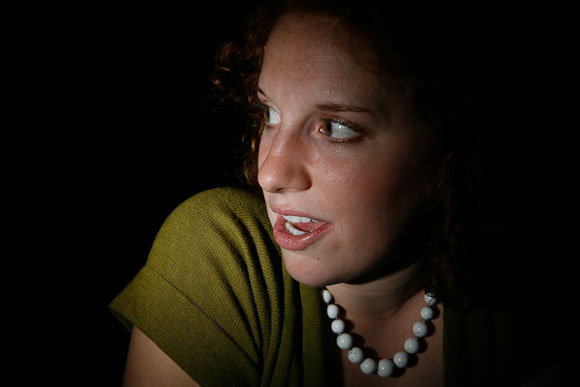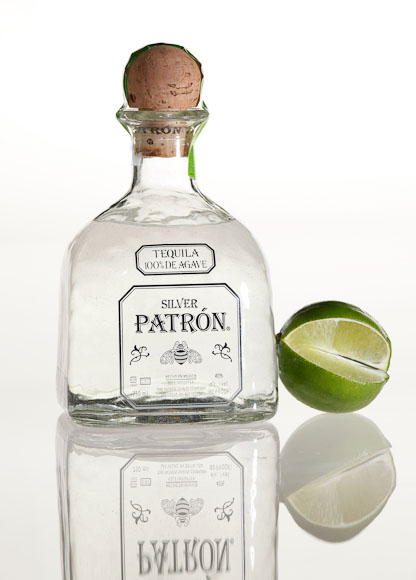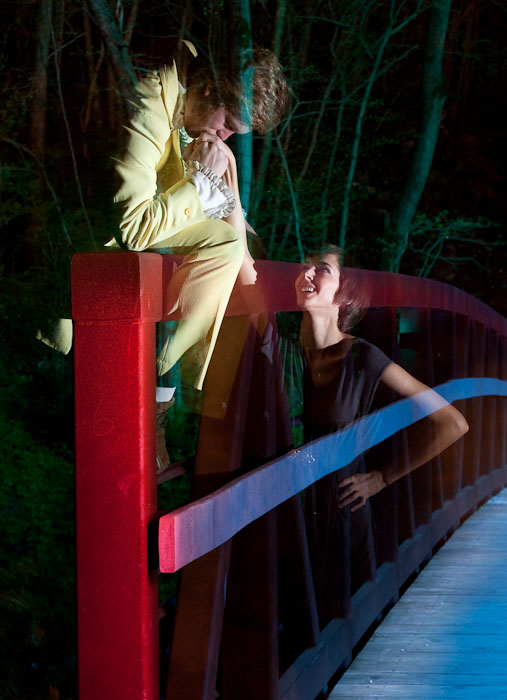
For a group project for Advanced Techniques, Vivian Esparza, Charles Ludeke, Lesley Freeman, and I met up at the Martin Luther King, Jr. memorial along the MKT Trail in Columbia, Mo. to make a long time exposure with added light–also called “painting with light” for its surreal effect.
Charles friend, Michelle, agreed to be a model for us on the bridge. After thinking on it for a bit, we decided that we should include a male figure in the photo, and Charles volunteered that he had a yellow tux (rental) in his car from a social gathering a on Friday night.
The background trees were lit with a Nikon SB-900 gelled green. I fired it off at 1/4 power for the nearer trees, and worked my way up to 1:1 for the background trees (knowing that they would be far too dark otherwise). Vivian did a great job of painting the bridge blue (an SB-900 with a blue gel), and Lesley walked along the bridge once with a flashlight aimed downward (on the ground, along the railing). Lesley then used a different flashlight, gelled red, to paint the post and upper railing of the bridge.
Finally, Charles and Michelle would pose on the bridge, and I used my Canon 550EX with the Panera straw-grid, dialed at 1/2 power, to “freeze” our ghosts in the frame.
All told, the exposure came to 5.7 minutes @ f/8, ISO 200 using a Canon 5D Mark II and 70-200mm f/4 IS lens @ 81mm…and a couple hours of experimentation. It was a great collaboration….and I think we might go back in a week to do something a little bit different ( but not in time for class).

